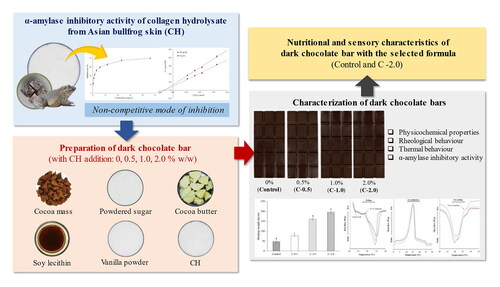Figures & data
Figure 1. Inhibitory effect of collagen hydrolysate on α-amylase. (a) α-amylase inhibitory activities of collagen hydrolysate. (b) Lineweaver–Burk plot for determining the kinetic constants for α-amylase.
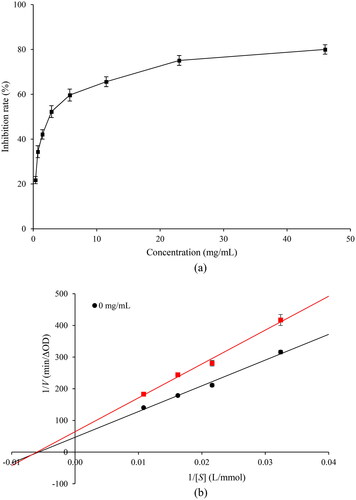
Table 1. Characteristics of dark chocolate bars prepared with collagen hydrolysate from Asian bullfrog skin at different addition levels.
Figure 2. Appearance of dark chocolate bars prepared with collagen hydrolysate from Asian bullfrog skin at different addition levels. Control: Dark chocolate bar prepared without collagen hydrolysate addition. C-0.5, -1.0, -2.0: Dark chocolate prepared with collagen hydrolysate addition at 0.5, 1.0, and 2.0% (w/w), respectively.
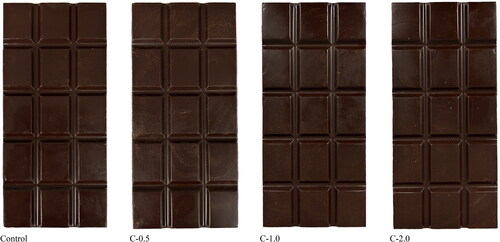
Figure 3. Breaking strength of dark chocolate bars prepared with collagen hydrolysate from Asian bullfrog skin at different addition levels. Control: Dark chocolate bar prepared without collagen hydrolysate addition. C-0.5, -1.0, -2.0: Dark chocolate prepared with collagen hydrolysate addition at 0.5, 1.0, and 2.0% (w/w), respectively. Different letters on the bars indicate significant differences between the samples (p ≤ 0.05).
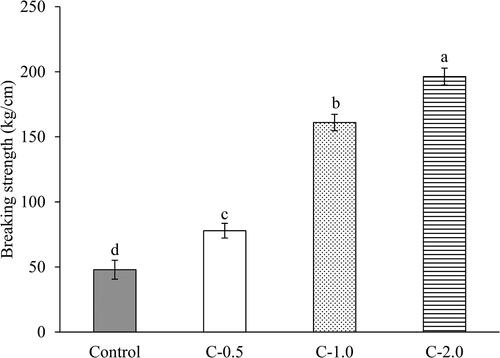
Figure 4. Thermal behaviour of dark chocolate bars prepared with collagen hydrolysate from Asian bullfrog skin at different addition levels. Control: Dark chocolate bar prepared without collagen hydrolysate addition. C-0.5, -1.0, -2.0: Dark chocolate prepared with collagen hydrolysate addition at 0.5, 1.0, and 2.0% (w/w), respectively. (a) Melting process after crystallization for 24 h at 22 °C. (b) Dynamic crystallization from 90 °C to – 50 °C. (c) Re-melting of crystals formed in segment (b). Arrow indicates the S-L-S (Solid–Liquid–Solid) transition.
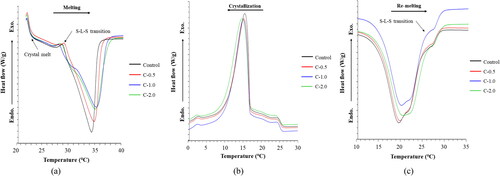
Table 2. Nutritional compositions, energy value, and sensory attributes of selected dark chocolate bars prepared with collagen hydrolysate from Asian bullfrog skin at different addition levels.

